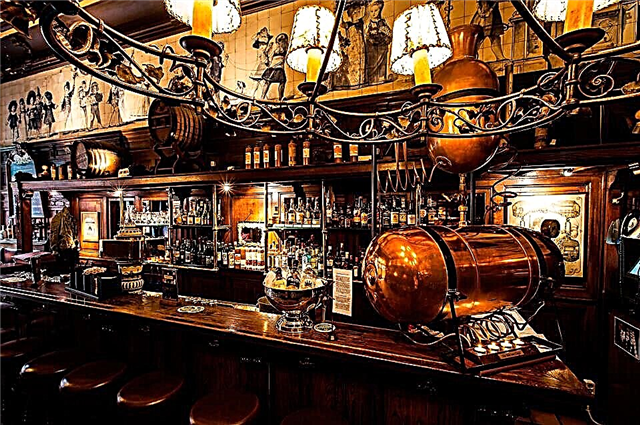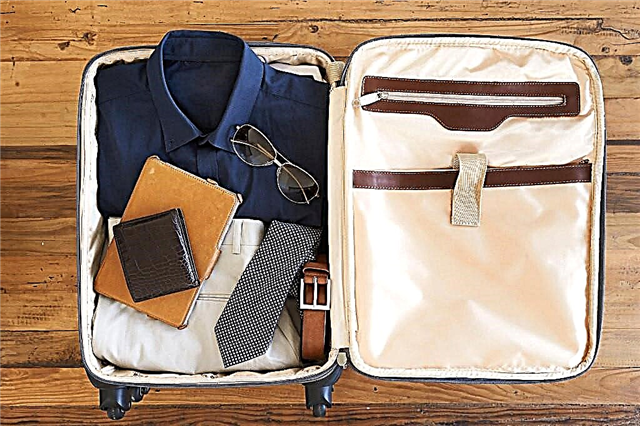Carry-on baggage is considered to be those things that passengers take with them to the cabin during air travel, but are not sent to the luggage compartment. According to the established rules, there is one seat in Economy Class, and two in First and Business Class. Some airlines often make exceptions, which are announced in advance. Let's take a closer look at what you can carry in your carry-on baggage, and what you have to check in or leave at home.

Allowable weight
One piece of carry-on baggage is considered cargo, three sizes of which are equal to 115 cm in total. Its weight should not exceed the norms established by specialists depending on the route and type of aircraft ... Different air carriers have their own standards, here are some of them:
- Aeroflot - 10kg
- "Russia" - 8kg
- Lufthansa - 8kg
- "KLM" - 12kg
- "Air Baltic" - 8kg
- "Air Berlin" - 6kg
- "S7" - 7kg
- Ural Airlines - 5kg
- Austrian Airlines - 8kg
- British Airways - 23kg
In excess of these norms, it is allowed to take with you outerwear, the press, or other printed materials for reading in flight, an umbrella, if necessary - a blanket, also a cane, crutches. If you are traveling with a small child, you are allowed to have a stroller weighing up to 10 kg, or a portable cradle. Also a laptop, phone, tablet, camera and accessories for them: a tripod, or a selfie stick, but only if their size is no more than 60cm.

Liquids
Special requirements are imposed on the transported liquids:
- all liquids, including creams, gels, aerosols, should be placed in containers, the volume of which does not exceed 100 ml. It is desirable that each jar be marked with an indication of its volume.
- the total volume of all these containers should not exceed 1000ml
- all containers should be placed in a transparent zippered bag
- each passenger is entitled to carry only one such package
- all packaging must pass security control
Medicines and instruments (needles for injection, droppers, etc.) must be accompanied by a prescription and a certificate from a doctor. Baby food, certainly in plastic containers, will also be thoroughly checked by the security control service.

What can be put in a cosmetic bag
Before the flight, ladies' cosmetic bags should definitely be revised. A nail file, manicure tweezers, preferably with rounded edges, should not exceed 60mm in length (this also applies to penknives). All creams, gels, cleaners, etc. move into a bag with liquids. If the bottle with your favorite perfume has a volume greater than the above, you must replace either the perfume or the bottle.
Food and drink
Many people have a question about food and drink during the flight. It is not always free on the flight, sometimes the quality of this food does not satisfy the tastes and desires of demanding gourmets, especially since the duration of flights is completely different.
In most cases, water can be filled in a plastic bottle prepared in advance in the dispenser immediately before boarding the plane after check-in (unfortunately, sometimes this cannot be done), or directly at the stewards on the plane itself. There are no such strict requirements for food. You can take on board not only biscuits and chocolates. It is desirable that the products do not have a pungent odor and are not gassing.

For satisfying hunger in flight, fruits, nuts, sandwiches with chicken, cheese, beef, salads in sealed containers ... are well suited. Do not forget that yoghurts, jams, sauces are liquids that should be in a special package at registration. In any case, napkins and a garbage bag will also be useful.
Duty Free goods
There are separate rules for goods purchased in Duty Free. They must be packed and sealed before the flight in the store itself. During connecting flights, when passing control, if the seals are in place, checks are present, there should be no problems. But you shouldn't really count on it. It all depends on the security personnel. Better to skimp before the final point of arrival.

What is prohibited in carry-on baggage
Before the flight, it is imperative to familiarize yourself with the list of those items that are strictly forbidden to carry with you while traveling:
- Firearms and their components. Pneumatic and non-firearms. This also includes children's toy pistols, as well as weapon models. Hunting and sports equipment must be registered separately.
- Sharp or pointed objects. Knives, straight razors, tools, skates, darts, scissors with a blade length over 60mm, knitting needles, corkscrew, etc.
- Blunt objects. Bits and cues, golf clubs, fishing rods, paddles, skateboards, etc.
- Explosive and flammable substances
- Toxic substances and chemicals.

Compliance with these simple rules will relieve travelers from unnecessary nerves when passing through security control. In the end, they were created not for the sake of creating any conventions, but to preserve the health and life of the passengers themselves. Air travel is considered the safest form of transport in terms of the number of accidents, and compliance with regulations makes it even less risky.
Recommended for viewing The most dangerous and unusual airports in the world.











